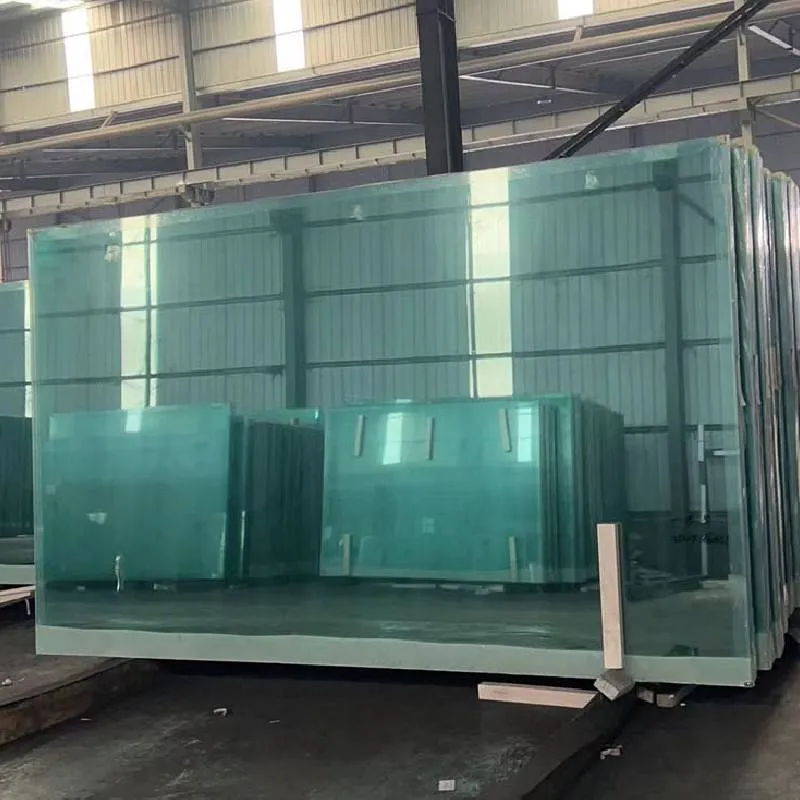The Float Glass Method Revolutionizing Glass Manufacturing
The float glass method, developed in the mid-20th century, revolutionized the glass manufacturing industry by providing a cost-effective and efficient way to produce high-quality flat glass. Previously, the production of flat glass involved a labor-intensive process known as the crown glass method, which resulted in uneven thickness and surface imperfections. The introduction of the float glass method not only enhanced the quality of glass but also scaled up production to meet the growing demand in various industries, including construction, automotive, and electronics.
At the heart of the float glass method is a simple yet ingenious principle Glass is floated on a layer of molten tin. The process begins with the melting of silica sand, soda ash, and limestone in a furnace at temperatures reaching around 1,600 degrees Celsius. Once the raw materials are completely melted, the glass is carefully poured onto a bath of molten tin. This crucial step allows the glass to spread out evenly due to the differences in density between glass and tin, resulting in a smooth, flat surface.
One of the primary advantages of the float glass method is its ability to produce glass sheets with uniform thickness and high optical clarity. As the glass floats on the tin, it naturally forms a flat surface, which eliminates the need for subsequent polishing or grinding. This not only reduces production time but also minimizes the risk of surface defects, making float glass ideal for applications where clarity is paramount, such as in windows and mirrors.
float glass method
Moreover, the float glass process allows for the production of large sheets of glass. Traditional methods often limited the size of glass products, but with the float method, manufacturers can create sheets that are over three meters wide and up to eighteen meters long. This innovation has been particularly beneficial for the architecture and construction industries, where large glass panels are increasingly used for facades and interior design.
The float glass method also supports the production of different types of glass, including tinted and coated variants. By incorporating metal oxides during the melting process or applying coatings to the glass surface, manufacturers can create energy-efficient windows that reduce heat transfer, thereby contributing to sustainability efforts in modern building designs. Additionally, float glass can be treated to enhance its strength and resistance to breakage, further expanding its applications in safety glass products.
Another important aspect of the float glass method is its environmental efficiency. The process operates continuously, with a minimal loss of material. The molten tin is recycled, and the overall energy consumption is relatively low compared to other glass-making techniques. Moreover, advancements in technology have led to the development of more efficient furnaces and systems for recycling waste glass, making the float glass method a more sustainable choice for manufacturers.
In conclusion, the float glass method has fundamentally transformed the glass manufacturing landscape. Its ability to produce high-quality flat glass efficiently and economically has made it the standard in the industry. With its applications vast and varied, from architecture to automotive and beyond, the float glass method not only meets the needs of modern society but also continues to pave the way for innovations in glass technology. As we move forward, the importance of this method in creating sustainable, high-performance glass products cannot be understated, confirming its place as a cornerstone of modern manufacturing practices.
 Afrikaans
Afrikaans  Albanian
Albanian  Amharic
Amharic  Arabic
Arabic  Armenian
Armenian  Azerbaijani
Azerbaijani  Basque
Basque  Belarusian
Belarusian  Bengali
Bengali  Bosnian
Bosnian  Bulgarian
Bulgarian  Catalan
Catalan  Cebuano
Cebuano  Corsican
Corsican  Croatian
Croatian  Czech
Czech  Danish
Danish  Dutch
Dutch  English
English  Esperanto
Esperanto  Estonian
Estonian  Finnish
Finnish  French
French  Frisian
Frisian  Galician
Galician  Georgian
Georgian  German
German  Greek
Greek  Gujarati
Gujarati  Haitian Creole
Haitian Creole  hausa
hausa  hawaiian
hawaiian  Hebrew
Hebrew  Hindi
Hindi  Miao
Miao  Hungarian
Hungarian  Icelandic
Icelandic  igbo
igbo  Indonesian
Indonesian  irish
irish  Italian
Italian  Japanese
Japanese  Javanese
Javanese  Kannada
Kannada  kazakh
kazakh  Khmer
Khmer  Rwandese
Rwandese  Korean
Korean  Kurdish
Kurdish  Kyrgyz
Kyrgyz  Lao
Lao  Latin
Latin  Latvian
Latvian  Lithuanian
Lithuanian  Luxembourgish
Luxembourgish  Macedonian
Macedonian  Malgashi
Malgashi  Malay
Malay  Malayalam
Malayalam  Maltese
Maltese  Maori
Maori  Marathi
Marathi  Mongolian
Mongolian  Myanmar
Myanmar  Nepali
Nepali  Norwegian
Norwegian  Norwegian
Norwegian  Occitan
Occitan  Pashto
Pashto  Persian
Persian  Polish
Polish  Portuguese
Portuguese  Punjabi
Punjabi  Romanian
Romanian  Russian
Russian  Samoan
Samoan  Scottish Gaelic
Scottish Gaelic  Serbian
Serbian  Sesotho
Sesotho  Shona
Shona  Sindhi
Sindhi  Sinhala
Sinhala  Slovak
Slovak  Slovenian
Slovenian  Somali
Somali  Spanish
Spanish  Sundanese
Sundanese  Swahili
Swahili  Swedish
Swedish  Tagalog
Tagalog  Tajik
Tajik  Tamil
Tamil  Tatar
Tatar  Telugu
Telugu  Thai
Thai  Turkish
Turkish  Turkmen
Turkmen  Ukrainian
Ukrainian  Urdu
Urdu  Uighur
Uighur  Uzbek
Uzbek  Vietnamese
Vietnamese  Welsh
Welsh  Bantu
Bantu  Yiddish
Yiddish  Yoruba
Yoruba  Zulu
Zulu 

